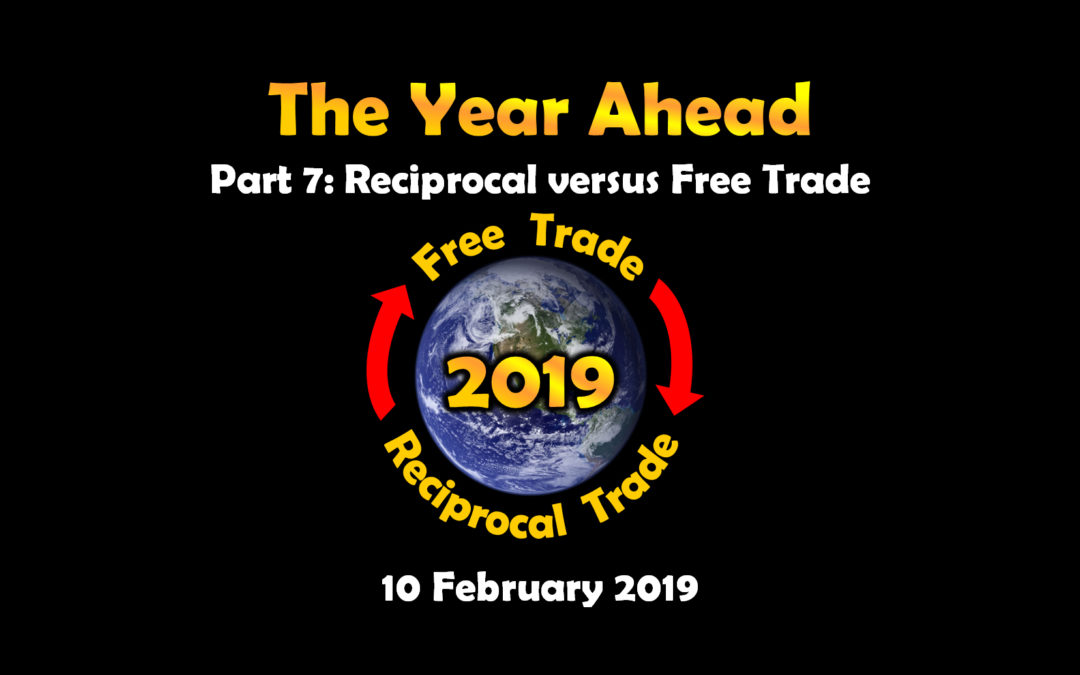Free trade is an ideal goal. In practice, reciprocal trade is more realistic, especially in an ever-changing global marketplace. After WWII, the U.S. economy equated to about half the world’s Gross Domestic Product (GDP, the value of all goods and services). For the first 3-decades after WWII, the United States could afford to assume the responsibility of rebuilding the economies of devastated European and Asian countries. In the subsequent 4-decades, Americans acquired an appetite for cheap foreign products and allowed the trade deficit in manufactured goods to grow to an incredible $12.4 trillion—a vast sum equivalent to a loss of 248 million years of American middle-class wages of $50,000 per year. Perhaps, now is the time to break our dependence on foreign goods and rebuild our flagging middle-class that has eroded as a result of outsourcing our manufacturing and labor force to foreign competitors. Download this free Part 7 posting and see other reports in the Jobenomics Library.
Every American president since Ronald Reagan to Barak Obama attempted to balance the trade deficit via diplomacy. However, habits are hard to break, and benefits are hard to revoke. American’s are addicted to inexpensive foreign products, and foreign nationals are unwilling to relinquish the status quo. Since diplomacy did not ameliorate trade imbalances, President Trump is instituting big-stick trade balancing policies aimed at the top U.S. trading partners who are responsible for three-quarters of the annual U.S. trade deficit. This big stick approach is alarming to domestic and international status quo supporters who claim that a trade war will ravage the global economy. On the other hand, $12.4 trillion worth of trade deficits over the last 4-decades devastated U.S. industries and workers.
Surprisingly, both parties in the U.S. Congress support an aggressive approach to normalizing trade. While Democrats abhor President Trump’s John Wayne approach to trade negotiations, they detest growing trade imbalances and fear growing Chinese militancy.
The Trump Administration rolled out its new approach to trade in 2017 that recorded the highest trade deficits in U.S. history. Due to the stockpiling of foreign goods in anticipation of a prolonged trade war, the trade inequities reached new heights in 2018. What will happen in 2019 is anyone’s guess. Jobenomics believes that the Chinese will eventually come to the table due to mounting international pressure and a slowing Chinese economy. On the other hand, brinksmanship can also have unintended consequences, and a trade war could quickly metastasize into a new Cold War that will be based more on economic and technological hegemony rather than weaponry.
The following 37 charts speak for themselves since they contain data from official U.S. government and international reports. So, determine for yourself whether it is time for “reciprocal” trade to replace the outmoded mantra of “free trade,” and whether the United States is justified in taking a big-stick approach rebalancing trade and ameliorating trade barriers, intellectual property theft and a host of other unfair trade practices.
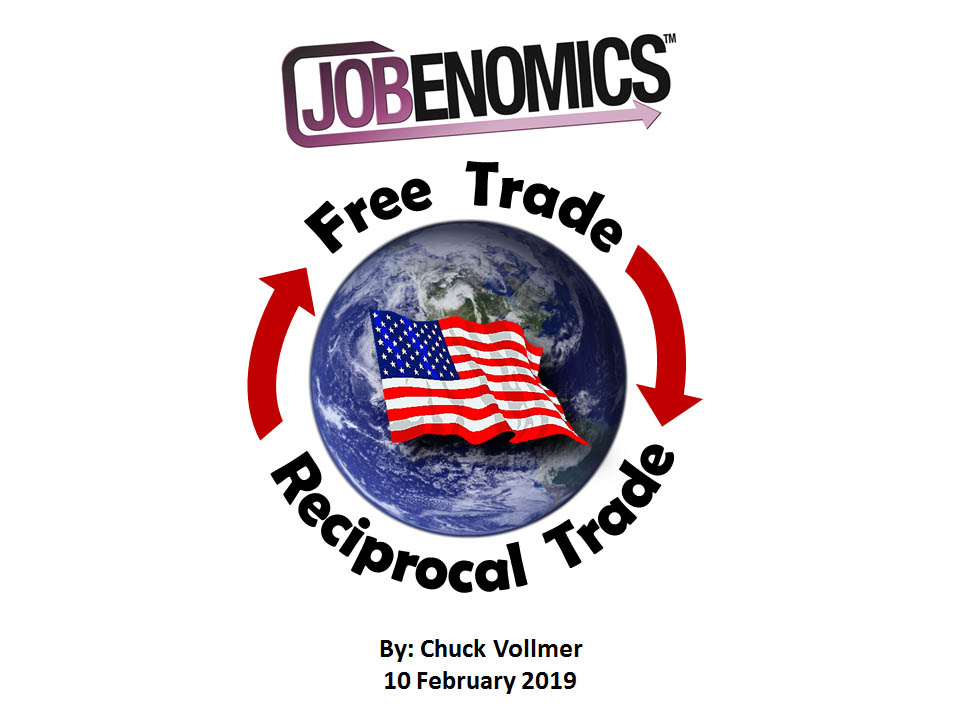
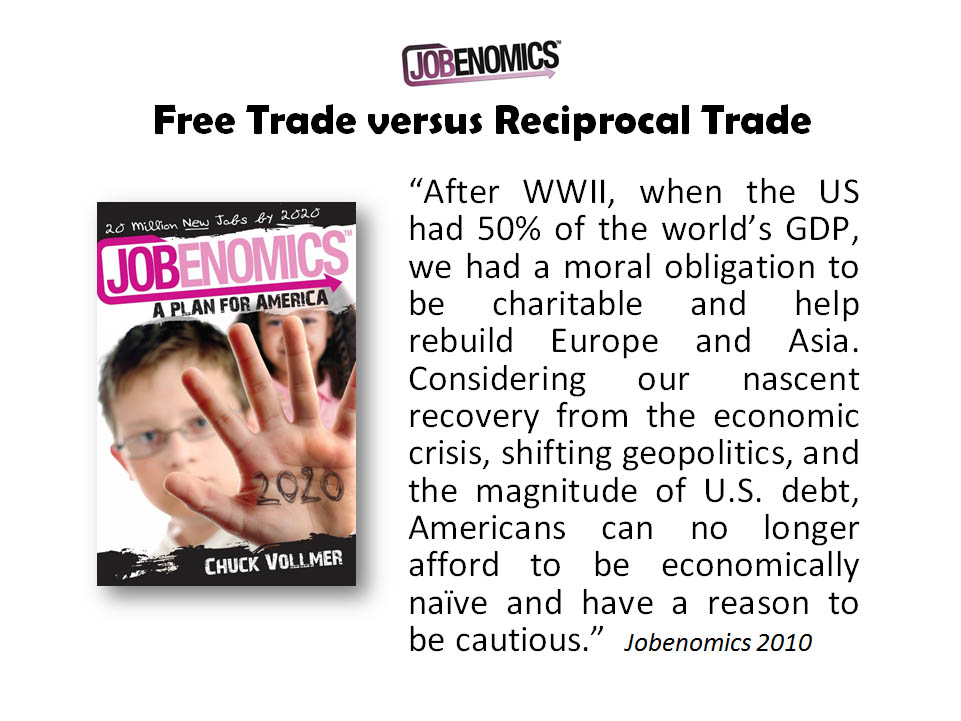
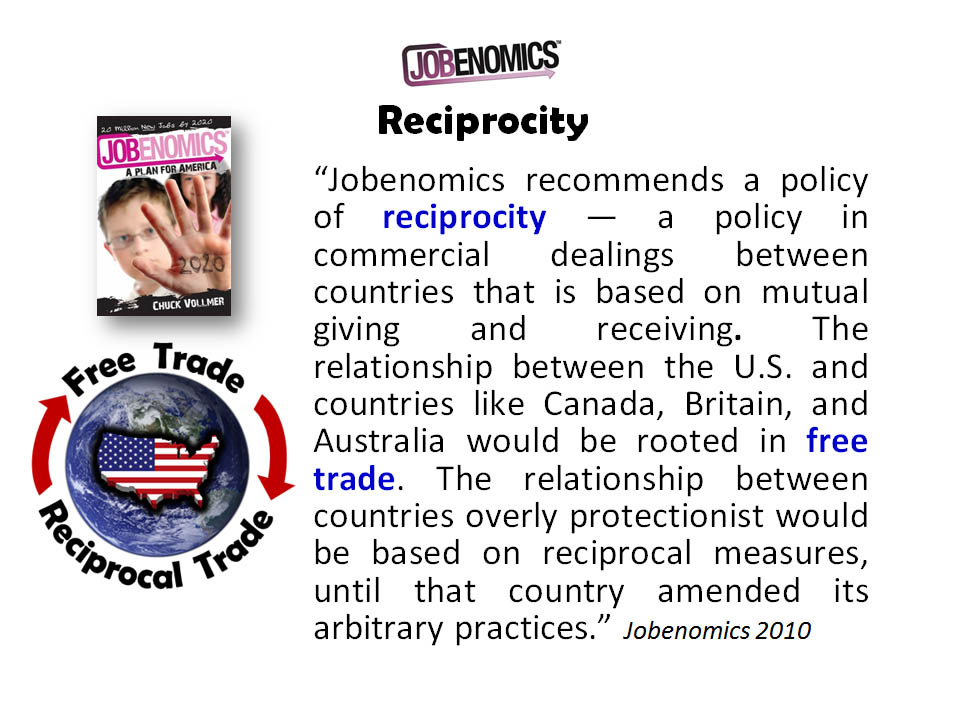

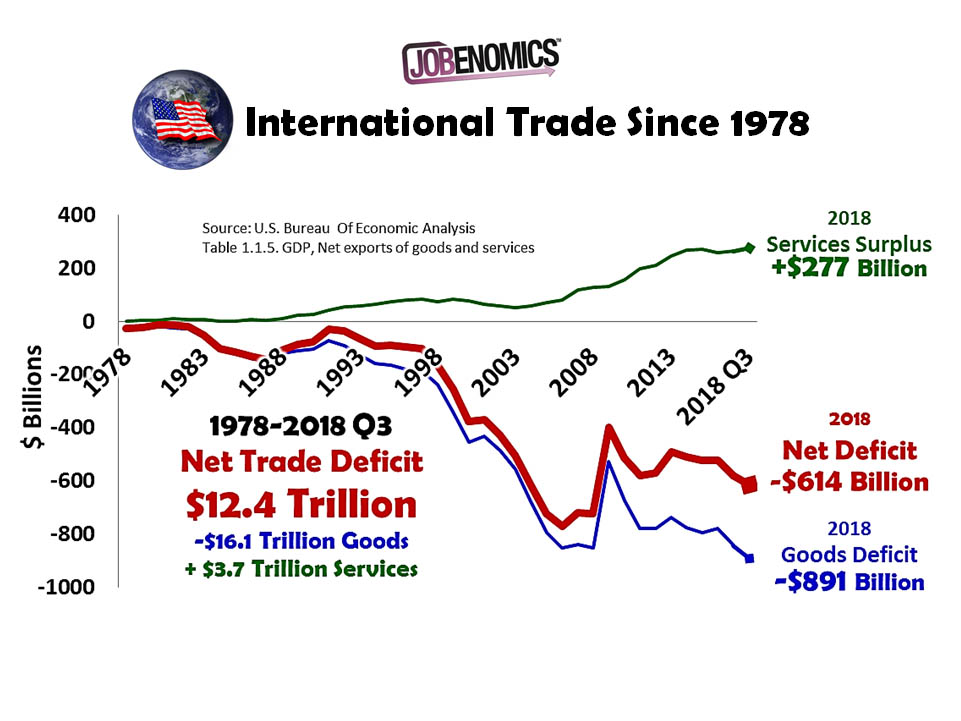
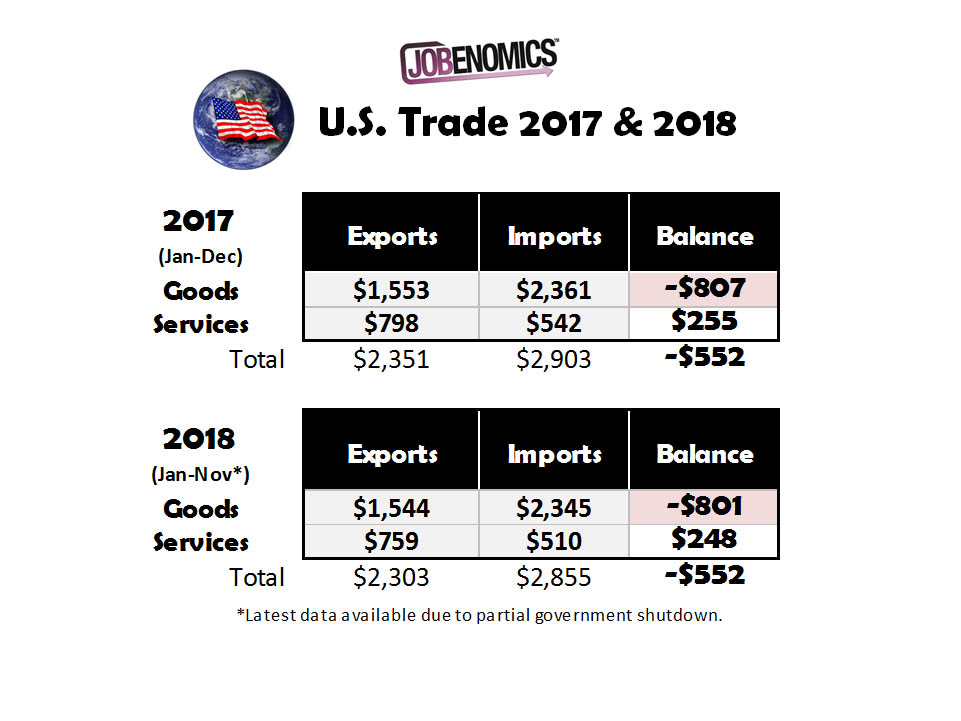
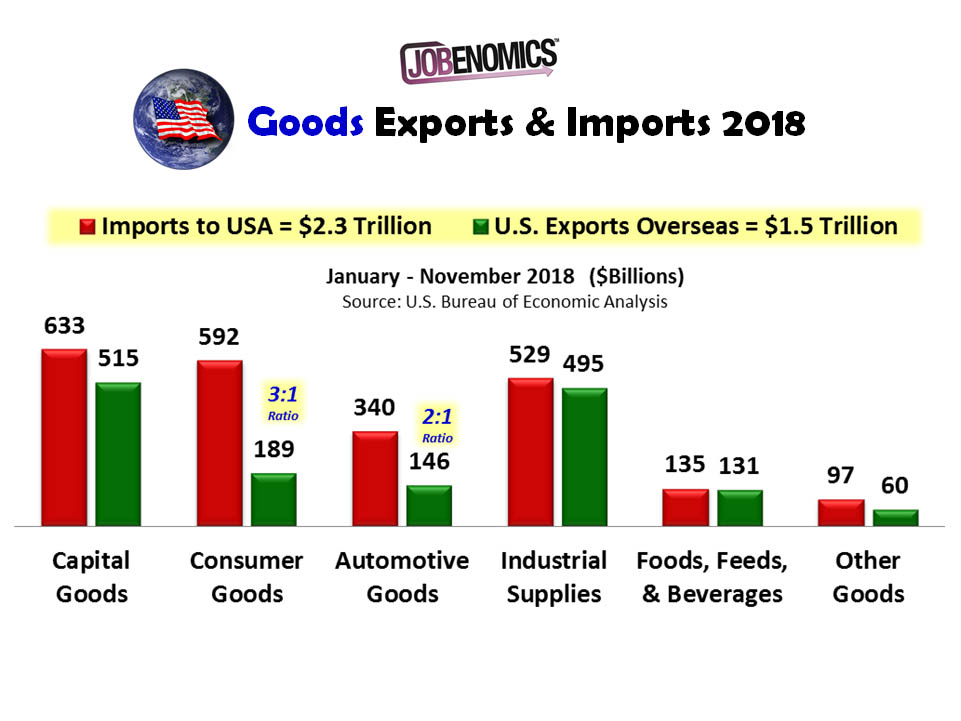
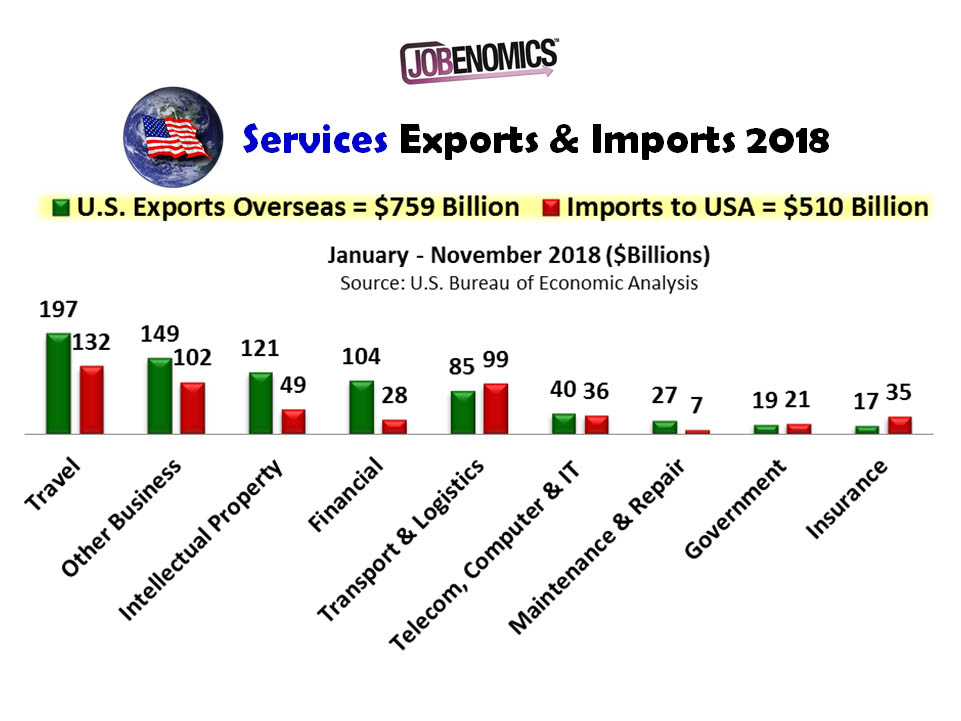
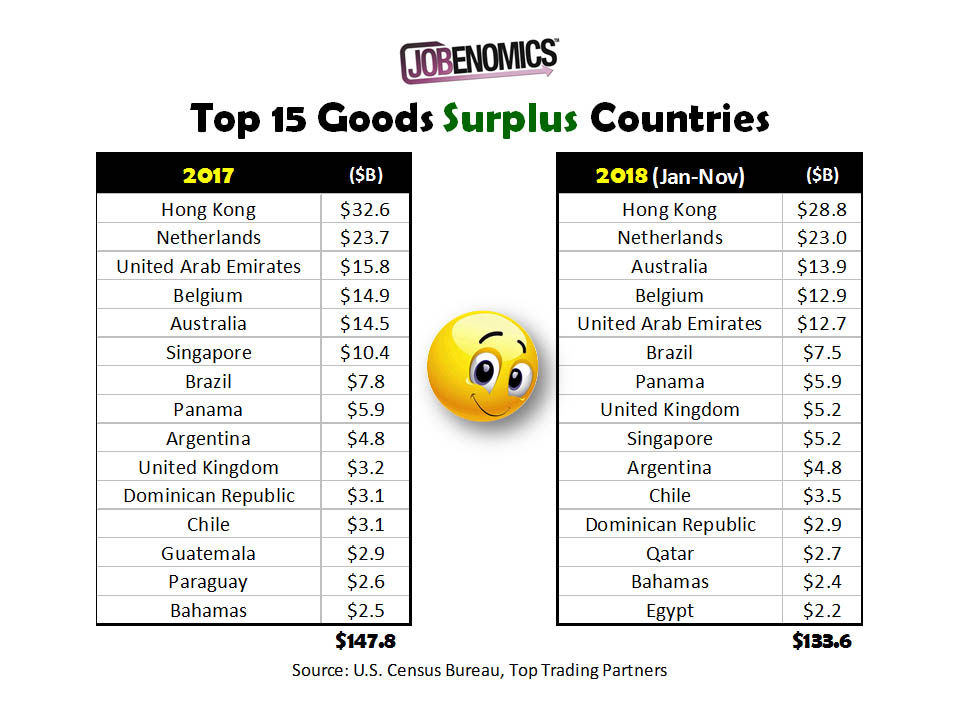
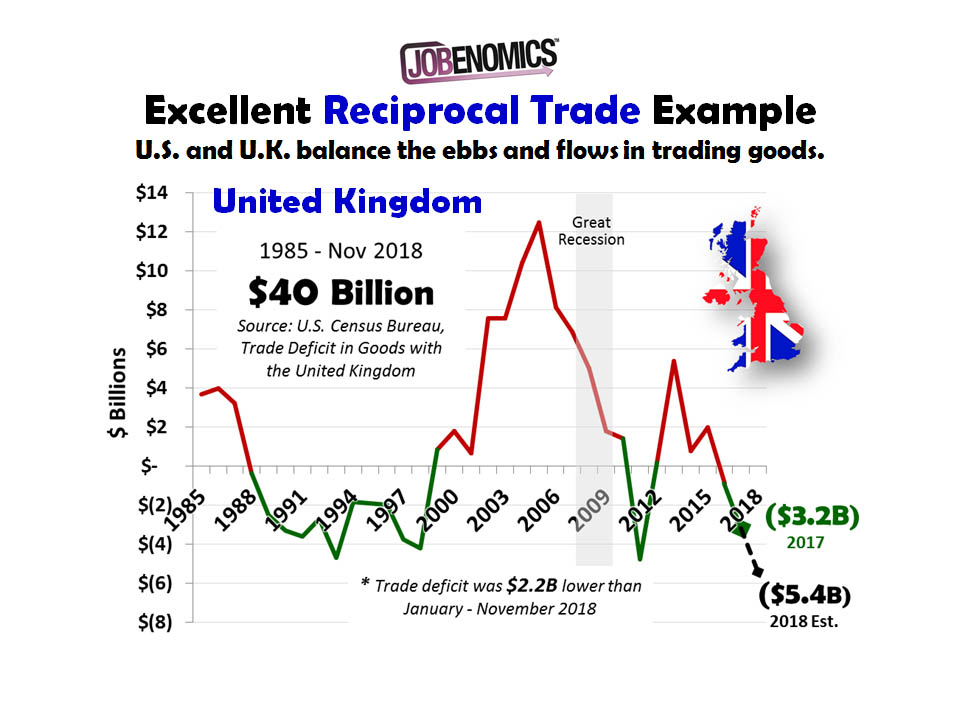
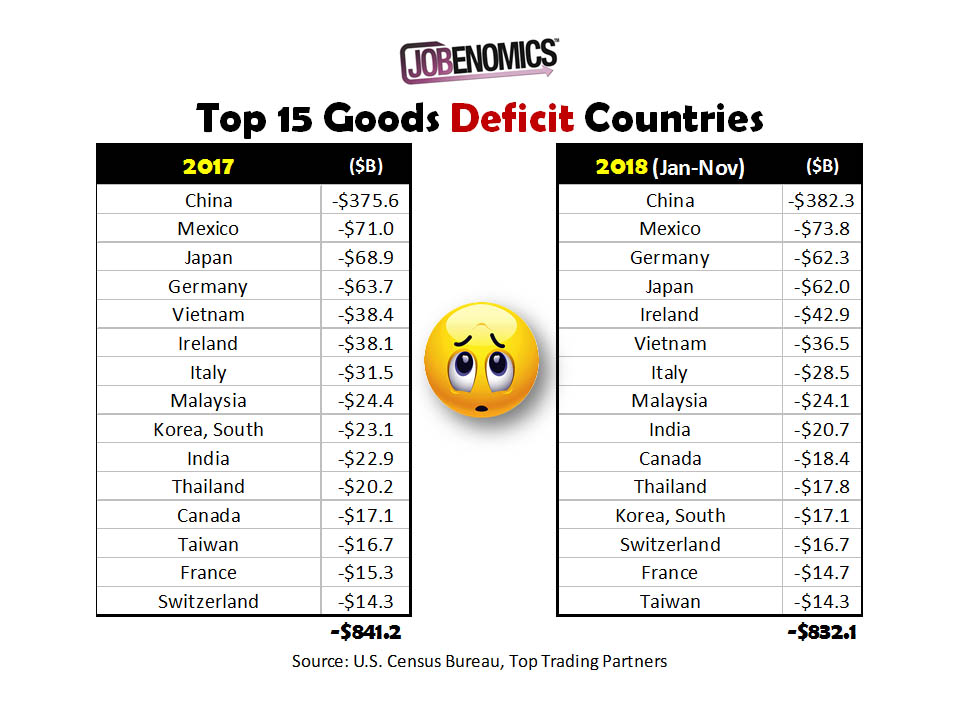
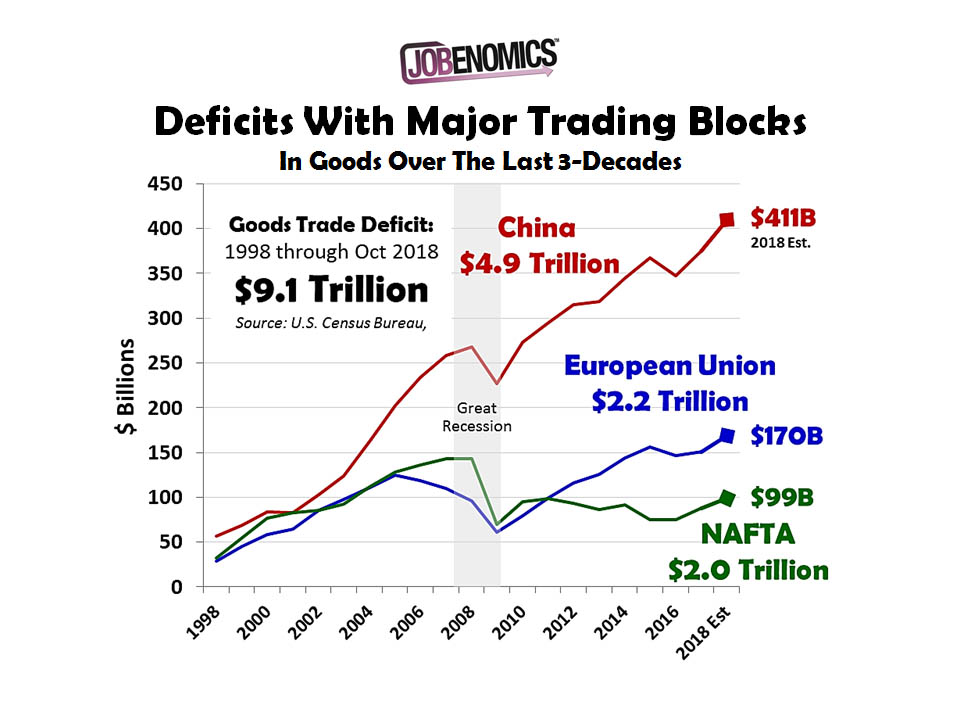
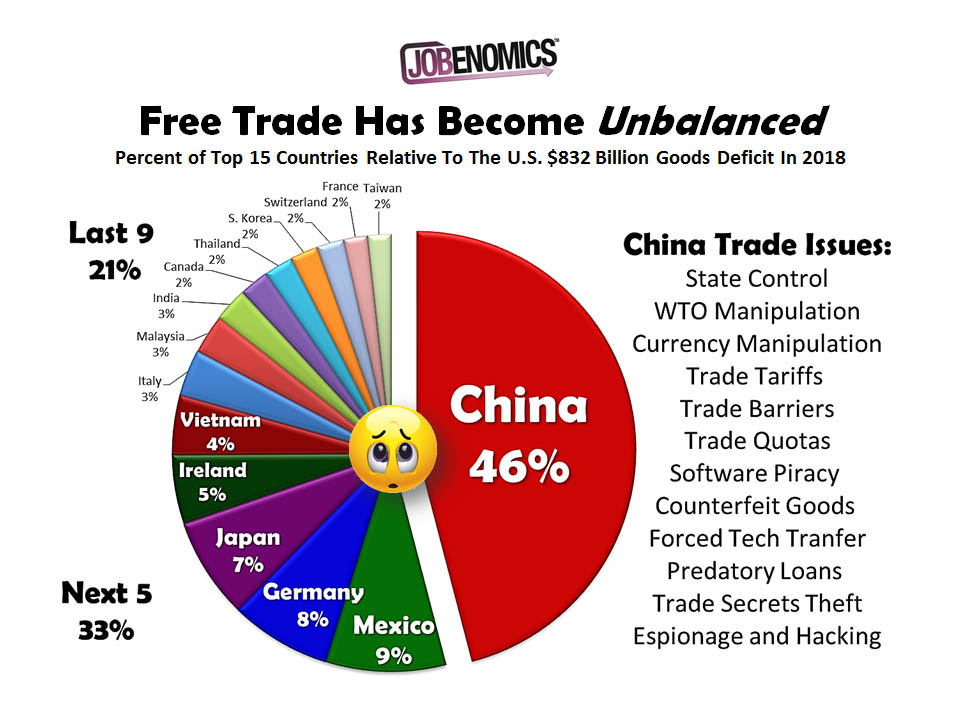


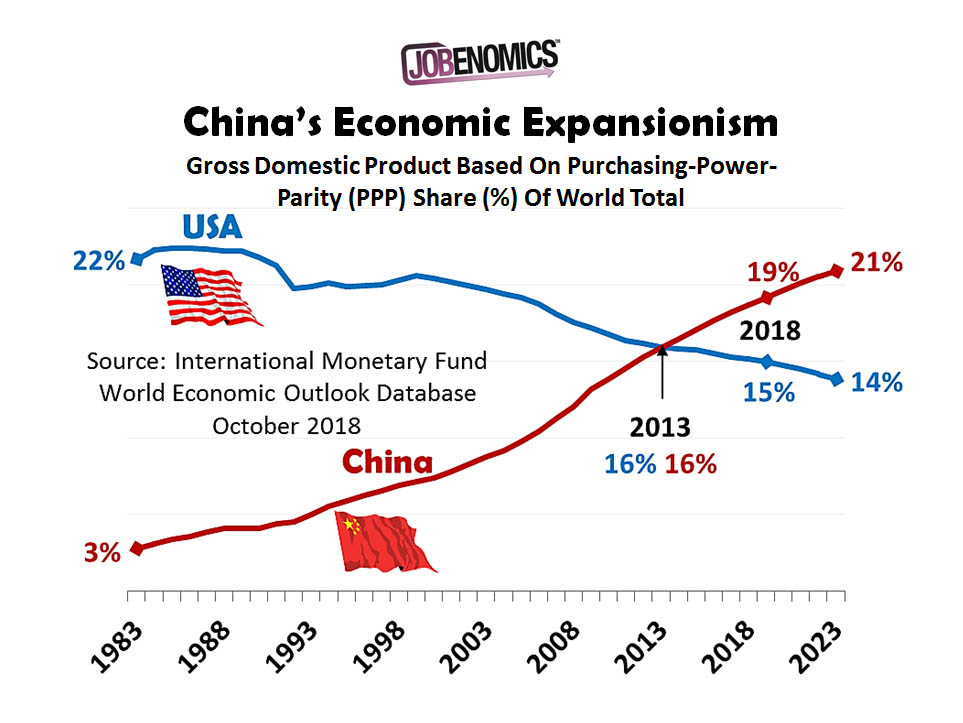
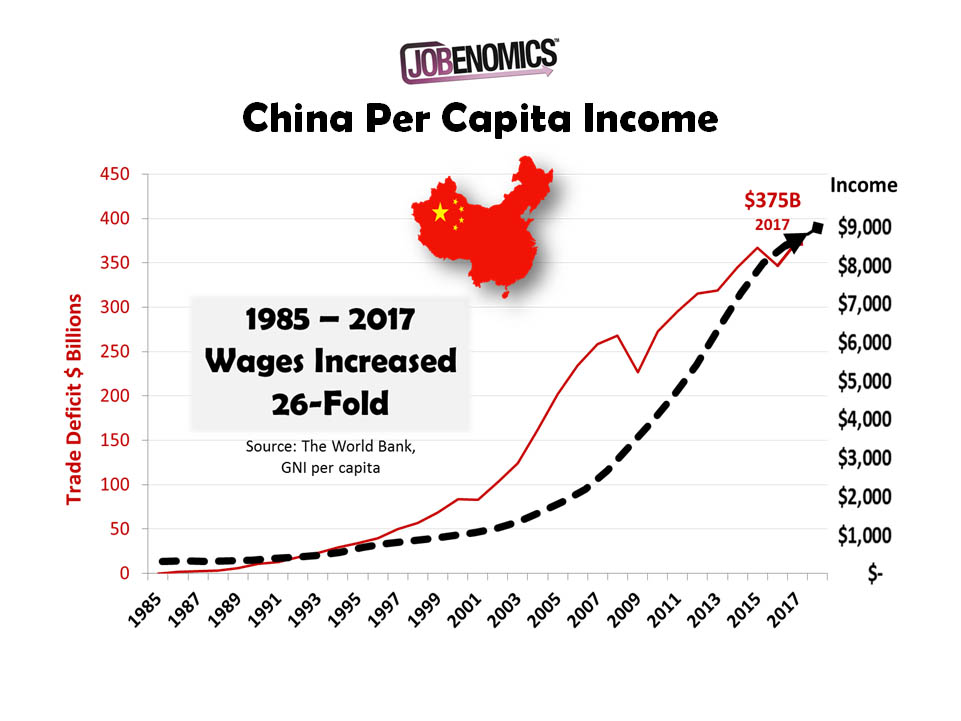
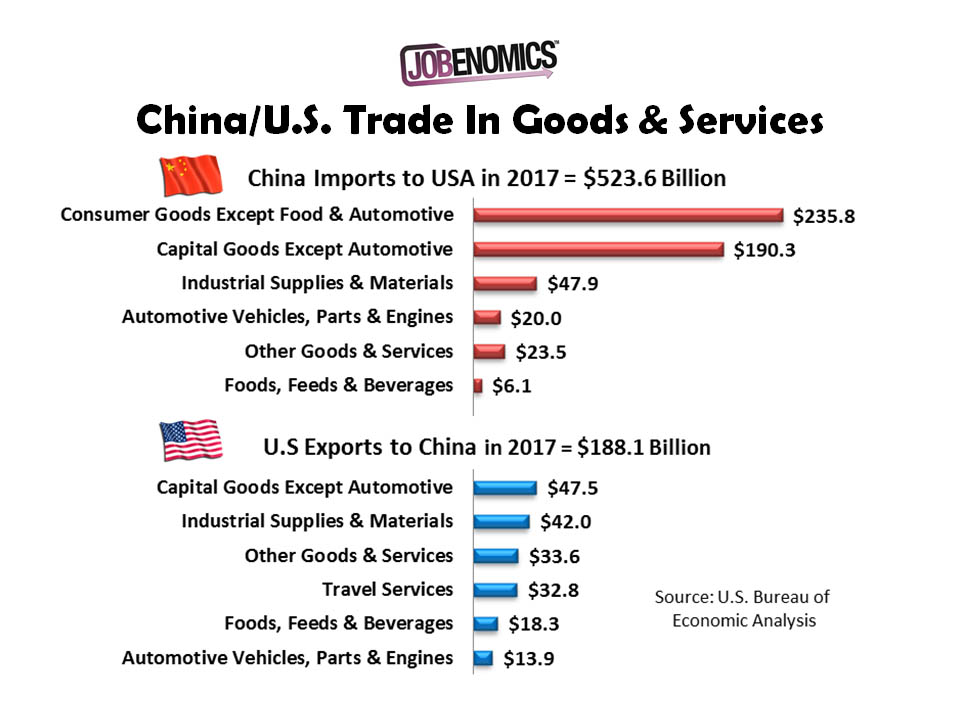

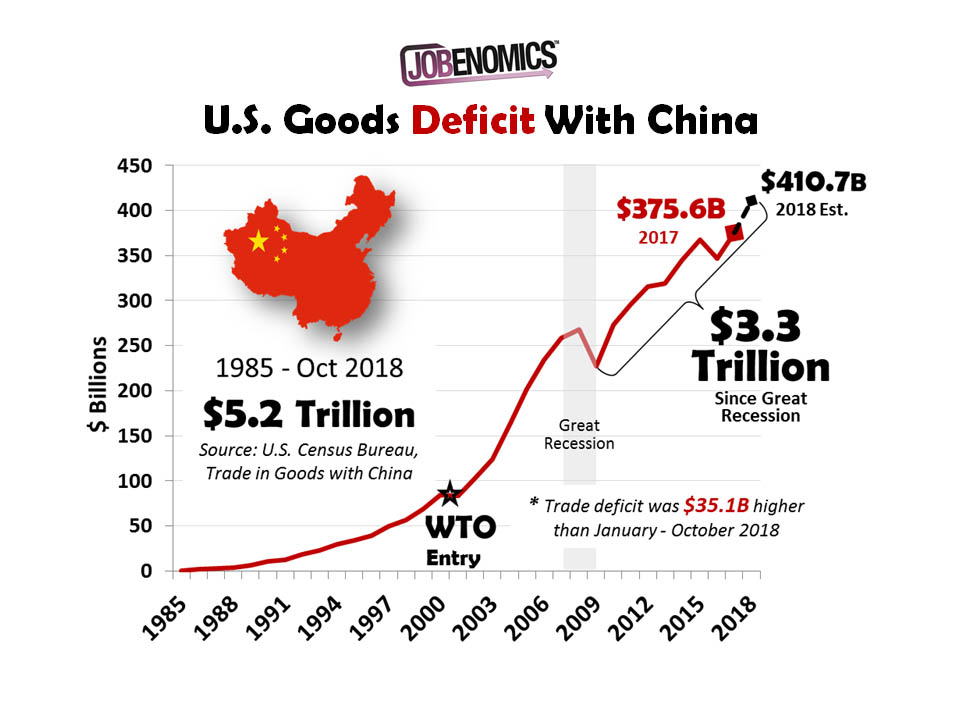
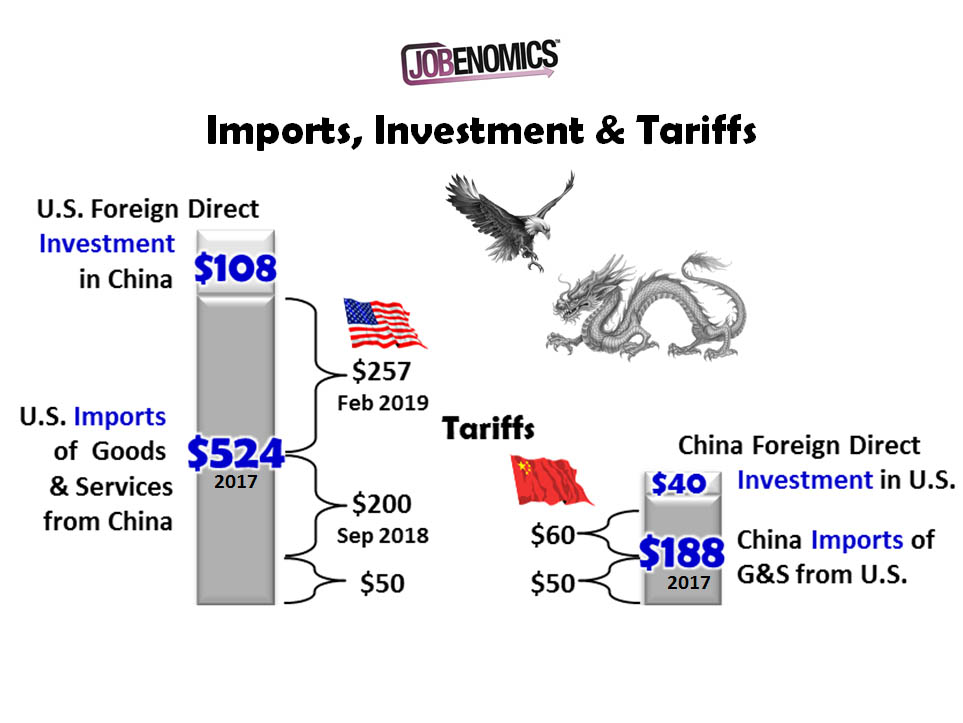

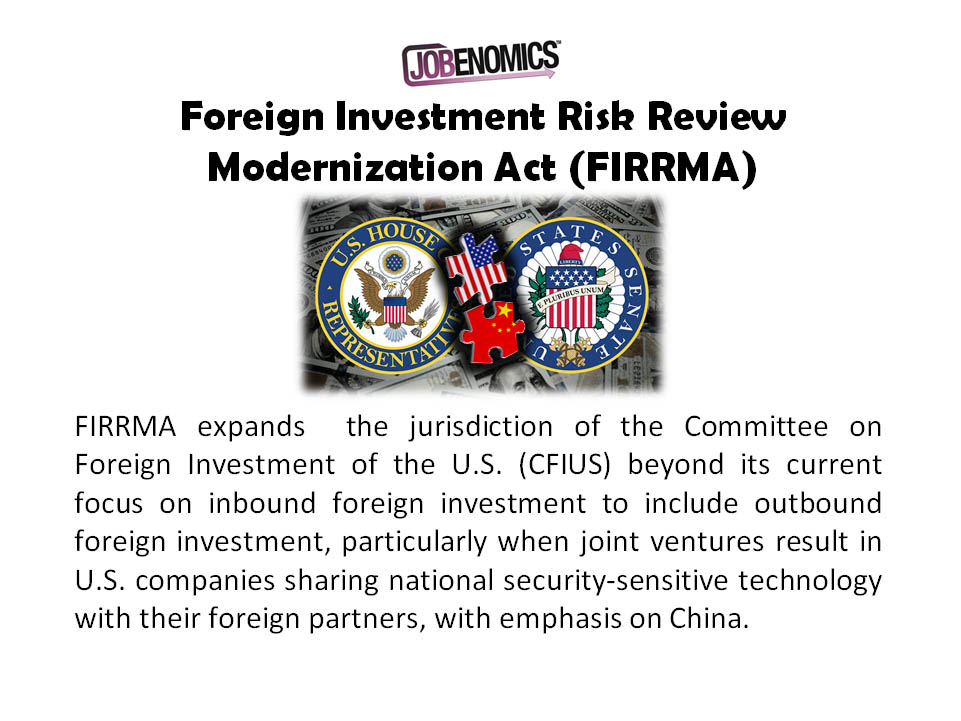

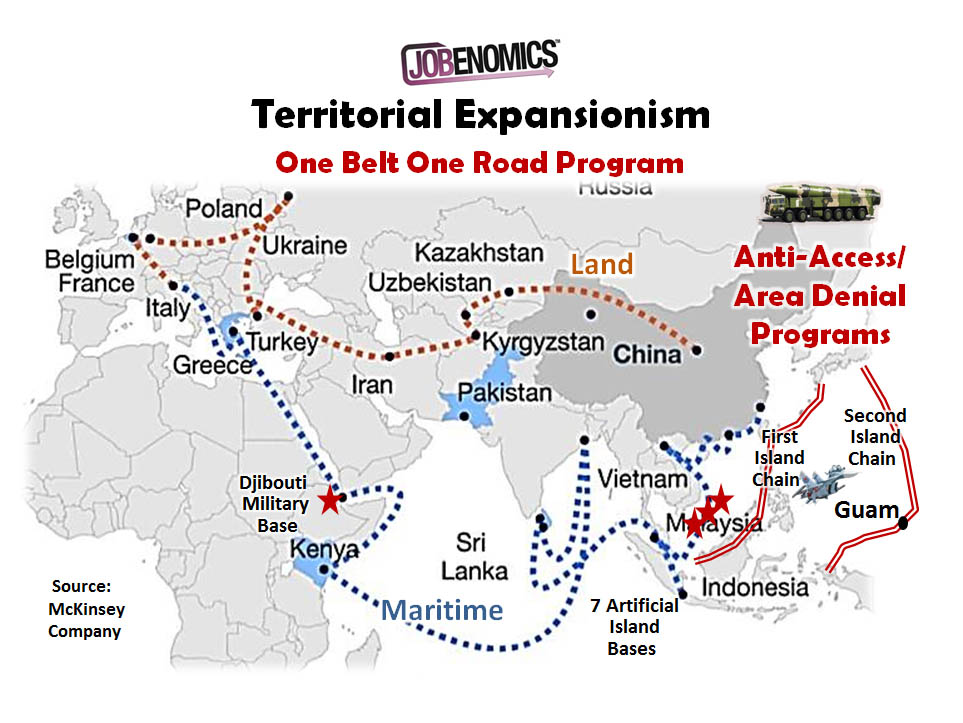
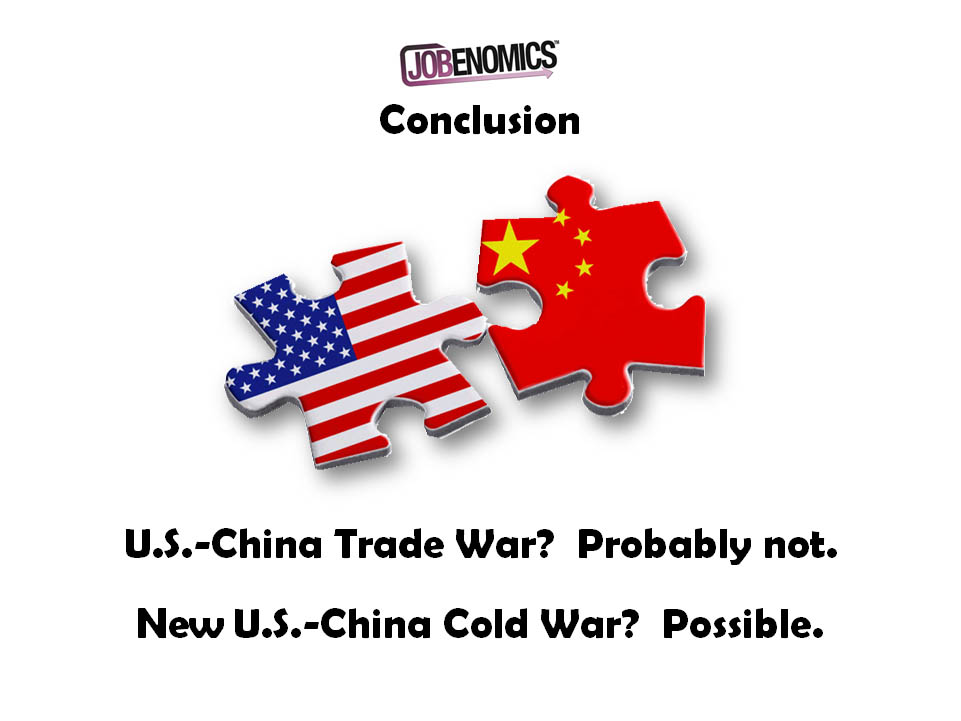
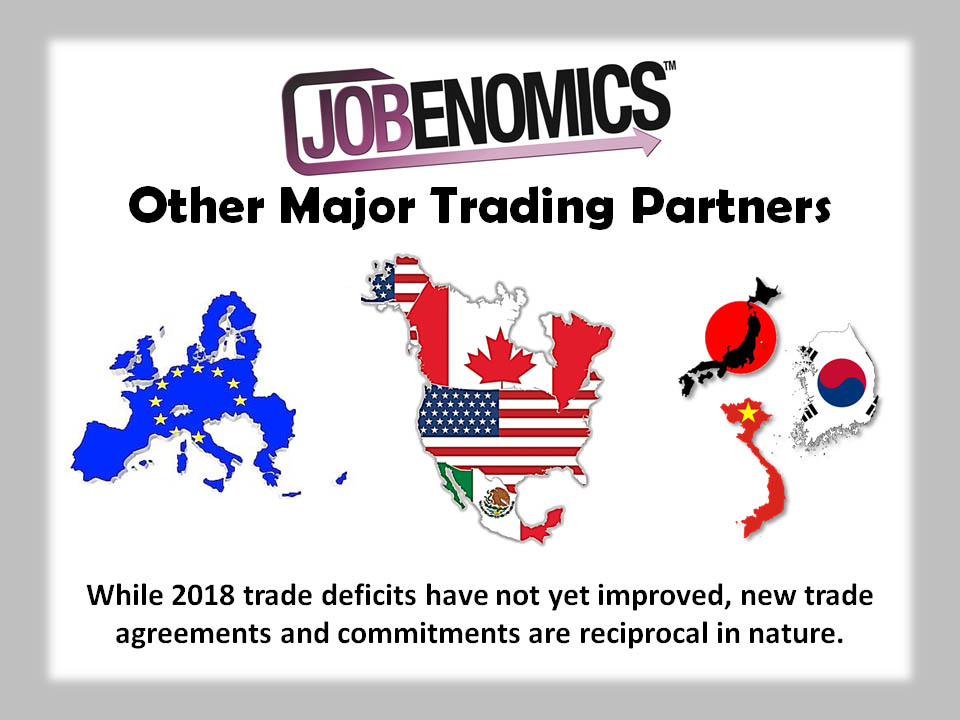
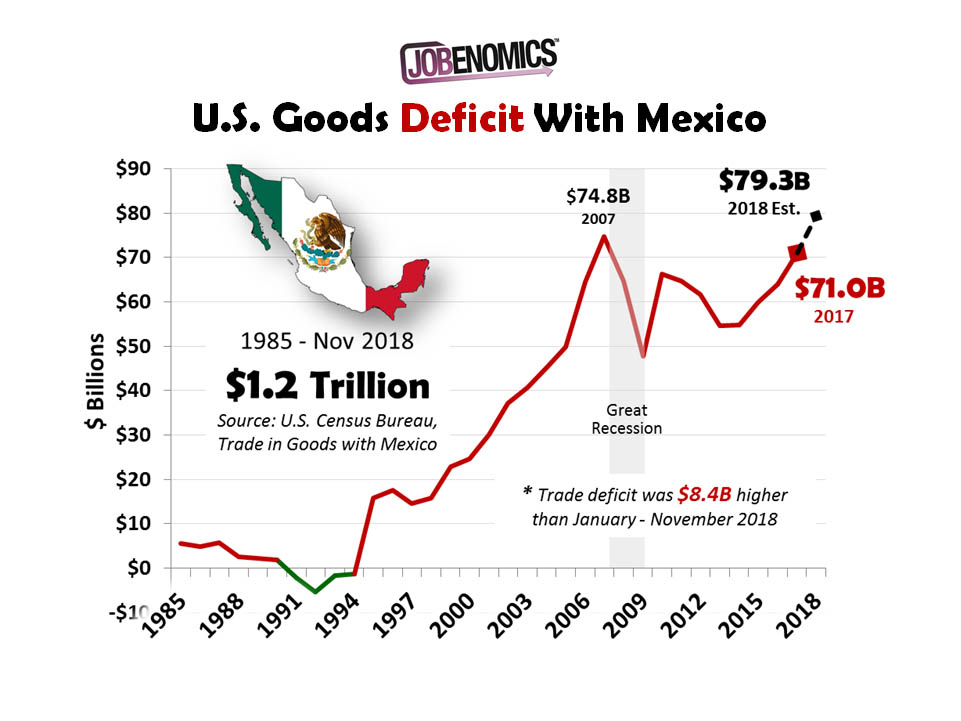
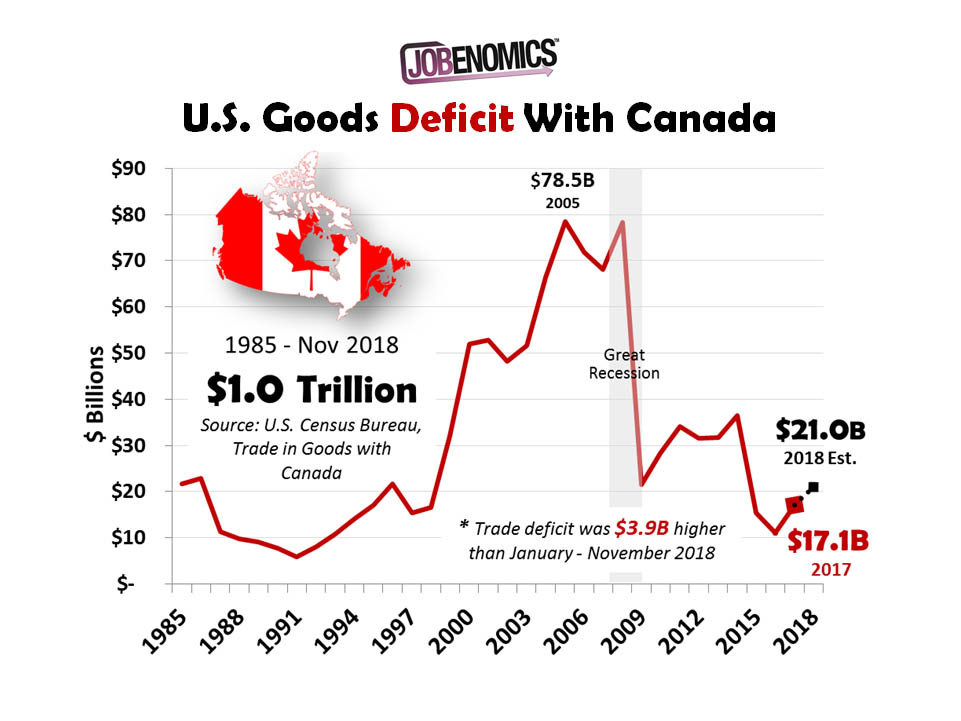
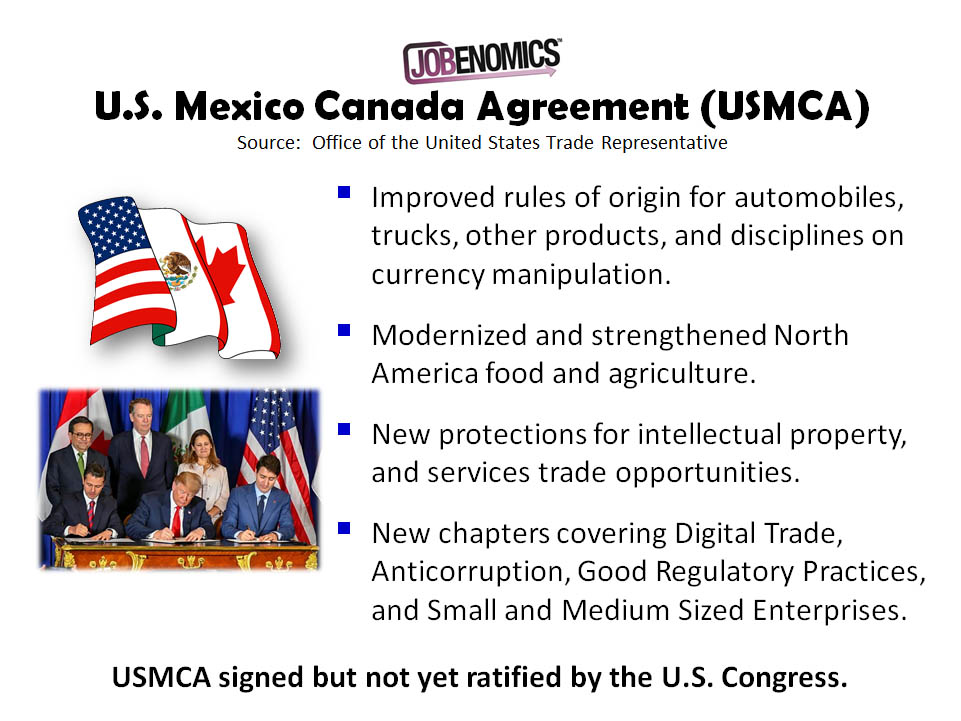
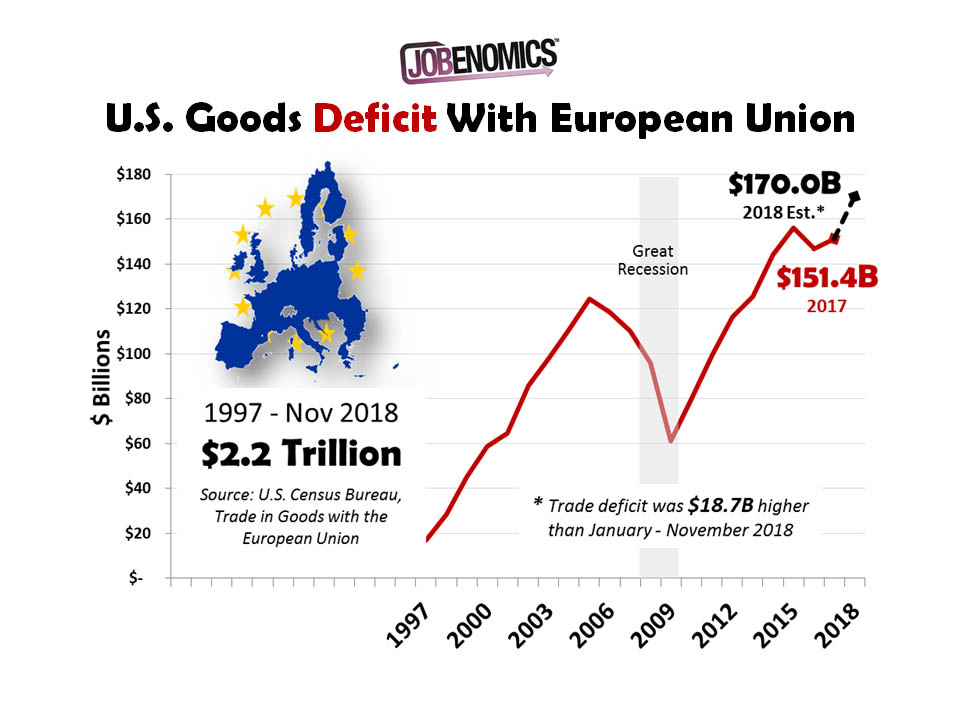
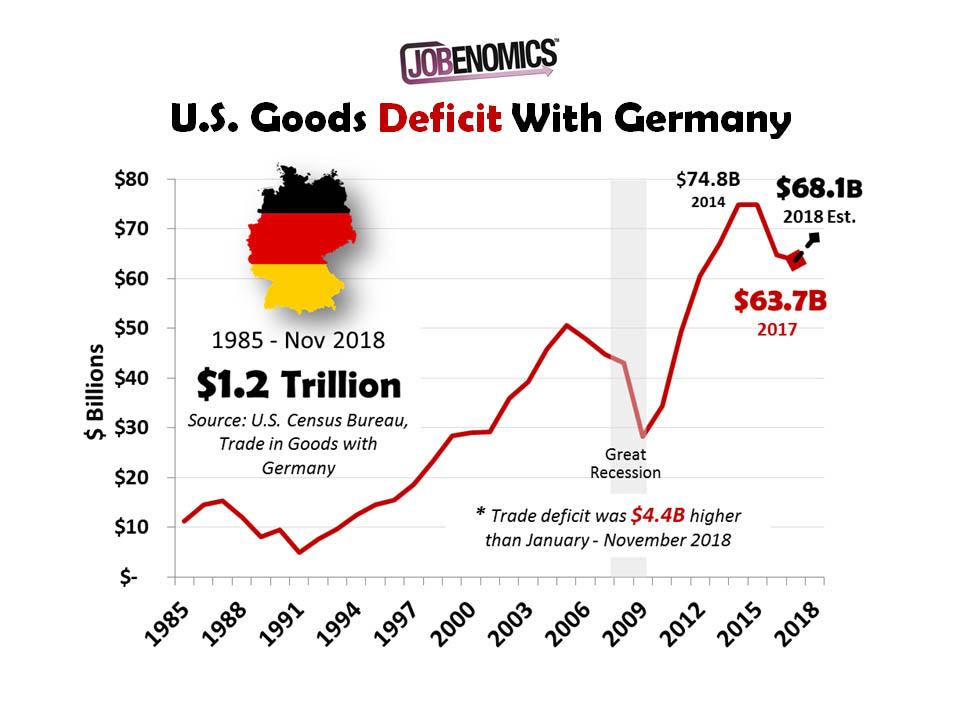
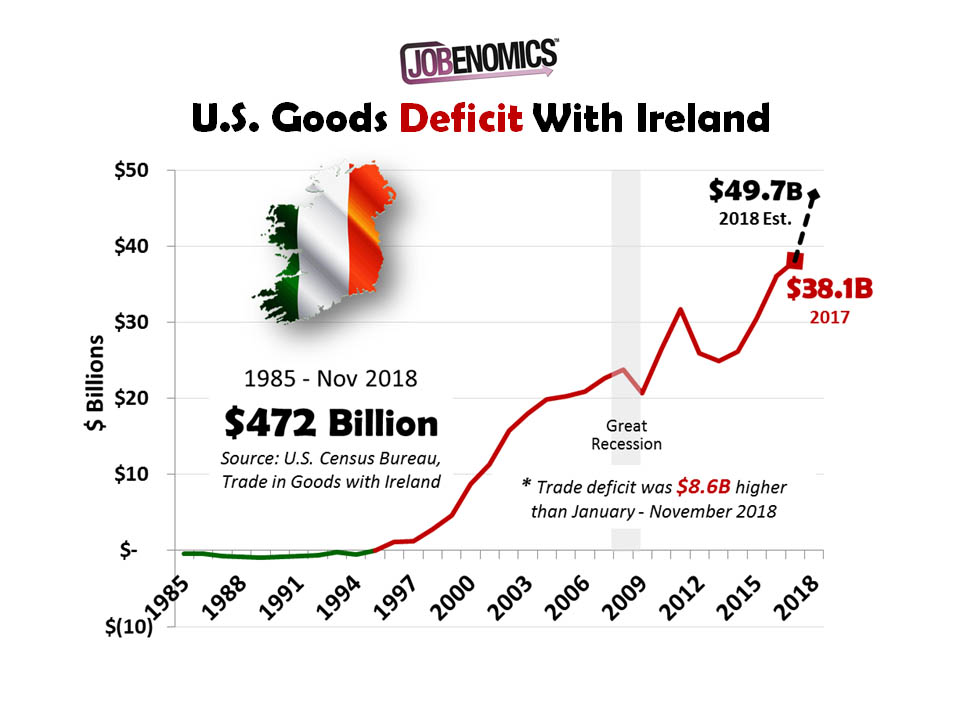
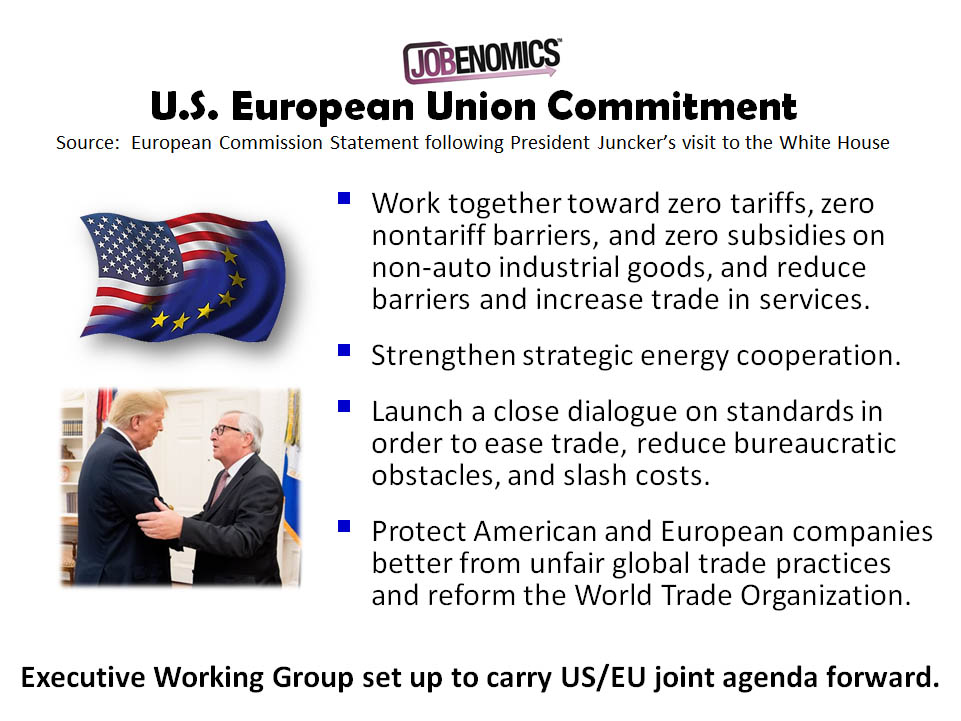
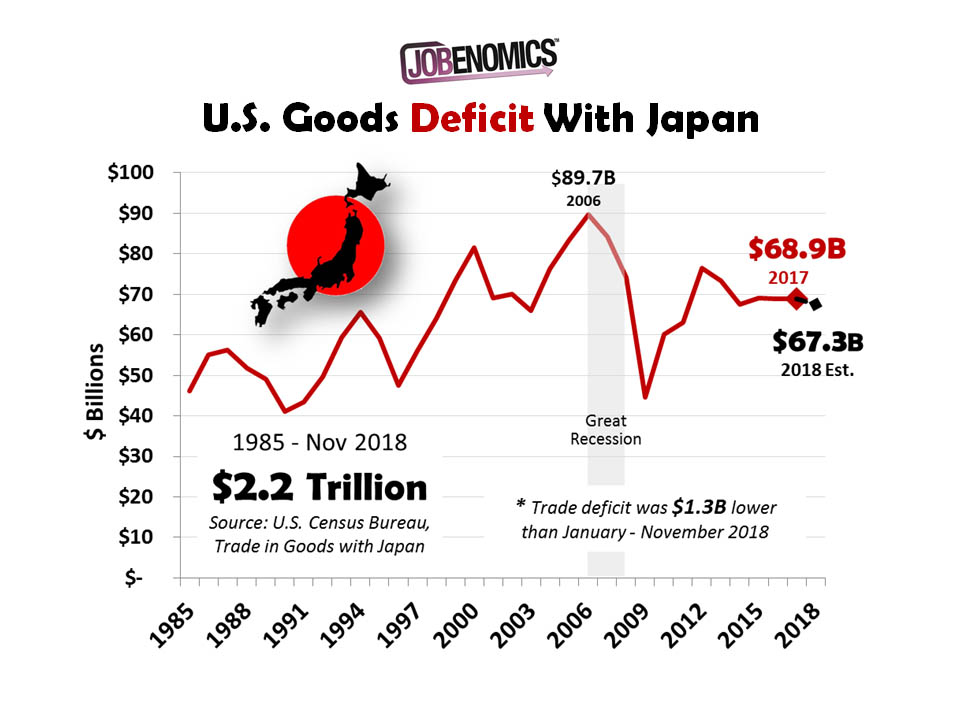

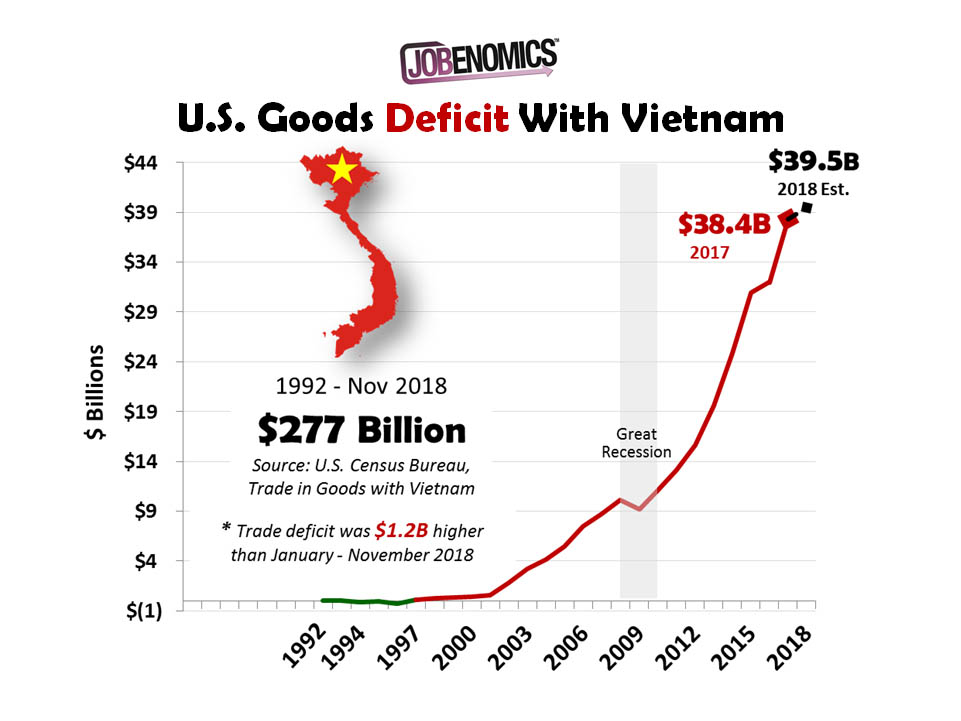
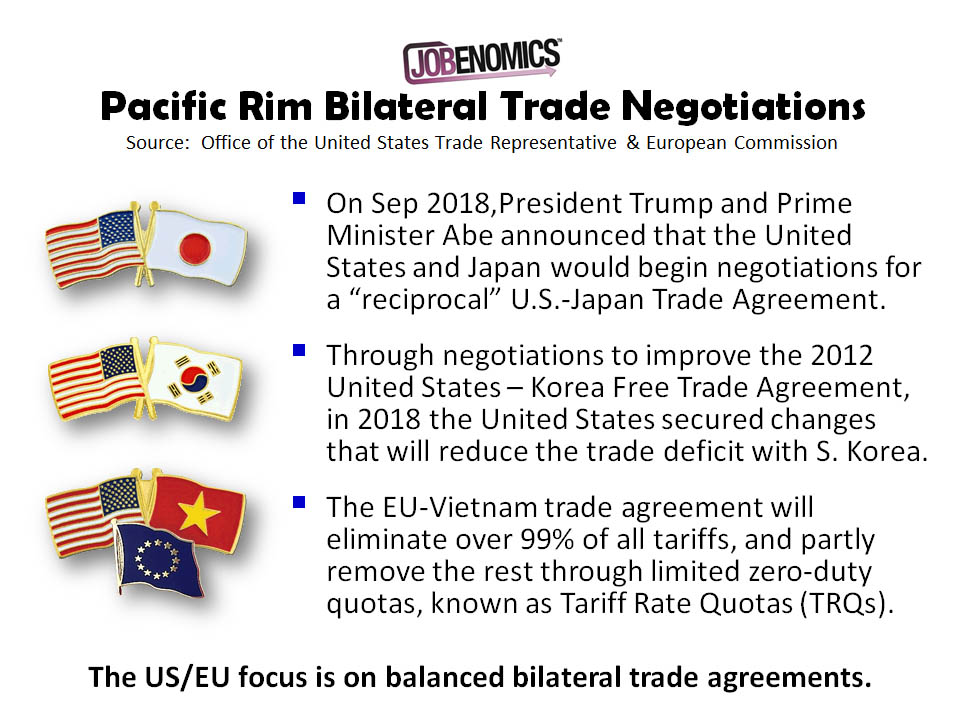
Jobenomics concentrates on the economics of business and job creation. The non-partisan Jobenomics National Grassroots Movement’s goal is to facilitate an environment that will create 20 million net new middle-class U.S. jobs within a decade. The Movement has reached an estimated audience of 30 million people via lectures, social media, and the Jobenomics America TV show. The Jobenomics.com website contains numerous books and material on how to mass-produce small business and jobs as well as valuable content on economic and industry trends. For more information see Jobenomics.com.

